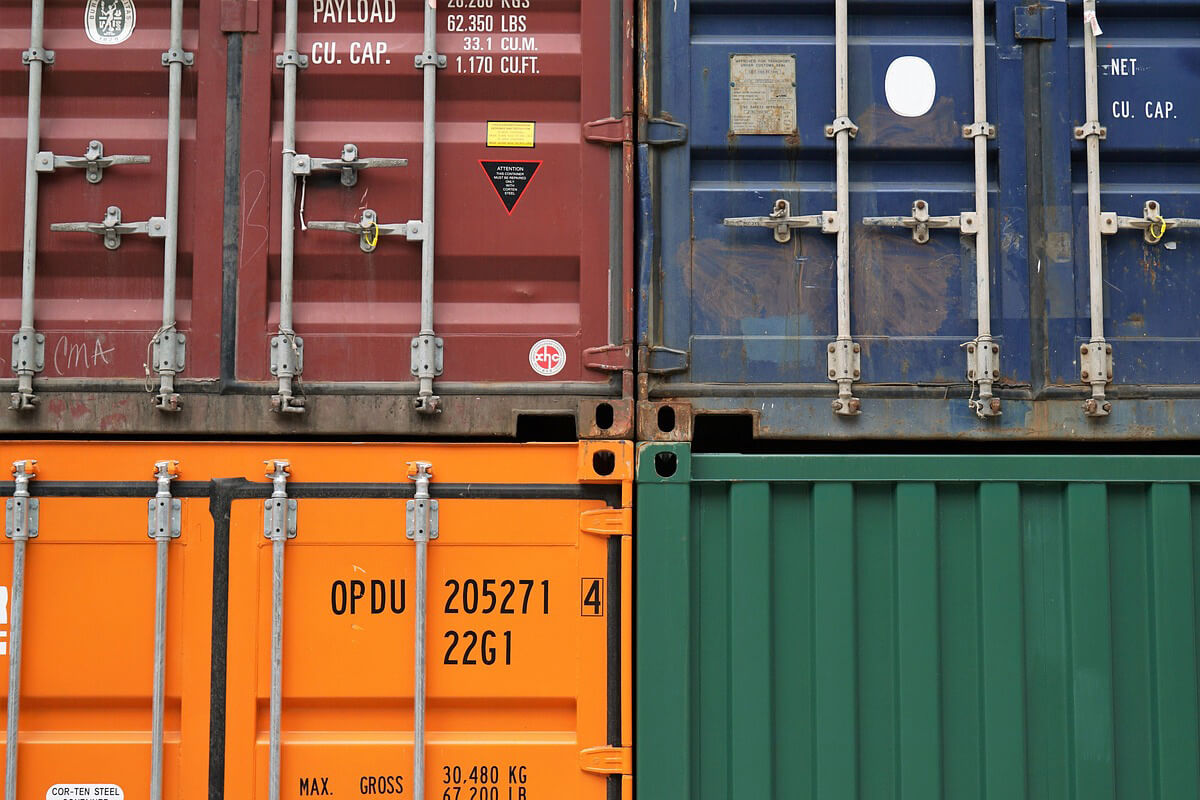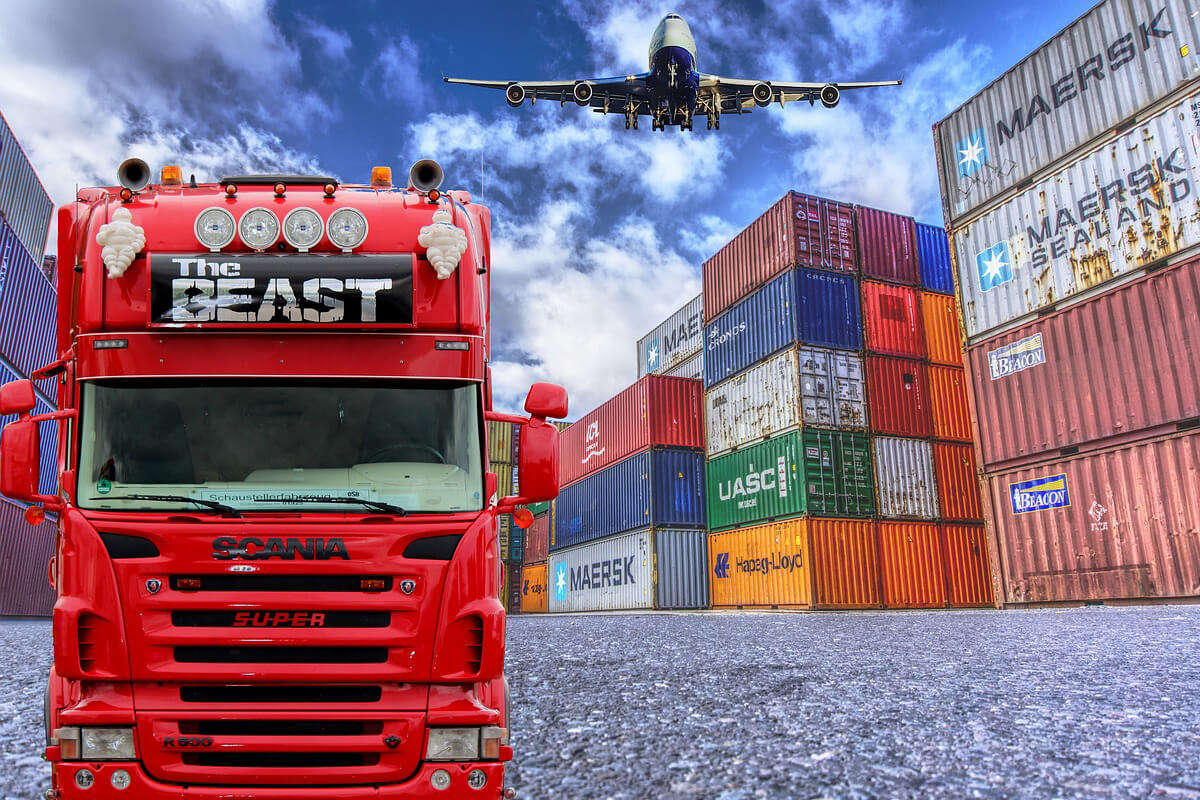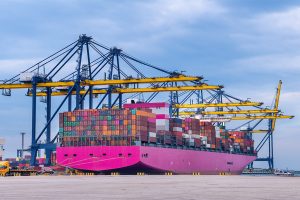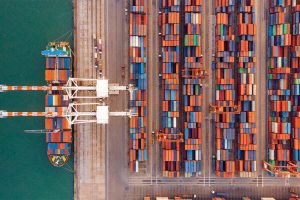International trade has its own science for moving items across various countries. You must have seen containers on ships in oceans and heavy trucks on roads. For international importers and exporters, the terms like FCL and LCL delivery are of common use. As you set your sights on containerized shipments originating from China, you need an in-depth understanding of such logistics terms.
In this article, you will learn what a less than container load is all about. From its fundamental definition and distinct advantages to the meticulous processes involved, this article serves as a compass for importers seeking clarity in navigating the complexities of international shipping.
At the end of the article, you will have a clear idea of why you need this type of container and when and how to use it efficiently to be cost effective in global shipping. Let’s start.
What Is LCL Delivery?

LCL stands for Less than Container Load. It refers to a shipping method designed for cargo that doesn’t occupy an entire shipping container. This stands in sharp contrast to FCL, or Full Container Load, where a single shipment fills an entire container. Understanding this fundamental distinction is crucial for you while importing from China or other countries.
Here is a brief overview of the main highlights of LCL delivery:
- Ideal for smaller shipments that do not warrant a full container.
- Offers flexibility and cost-effectiveness compared to FCL.
- Allows multiple shipments from different consignees to share space in a single container.
LCL accommodates a diverse range of products, making it an attractive option for businesses across various industries. Here are the common types of goods that are well-suited for LCL shipments from China:
- Electronics and components
- Apparel and textiles
- Small machinery and equipment
- Consumer goods and accessories
Advantages of LCL for a Small Business
The strategic choice between Less than Container Load (LCL) and Full Container Load (FCL) can significantly impact the efficiency and cost-effectiveness of a shipment. For smaller shipments and businesses, opting for LCL holds a myriad of advantages that can be pivotal while dealing in global logistics.
Let’s discuss how a small business can benefit from LCL:
- Pay for What You Use: LCL allows businesses to pay only for the space their goods occupy within the container. For smaller shipments that don’t fill an entire container, this results in substantial cost savings compared to the fixed cost associated with FCL.
- Reduced Overhead: The ability to share container space with other shipments means that businesses can distribute the costs of shipping across multiple consignees. This shared cost model makes LCL an economically viable option for businesses with smaller shipping volumes.
- Optimized Inventory Management: LCL provides businesses the flexibility to ship smaller quantities, enabling more precise management of inventory levels. This is particularly advantageous for businesses with fluctuating demand or those testing new markets.
- Cash Flow Management: Smaller shipments mean lower upfront costs, allowing businesses to manage their cash flow more effectively. This is especially crucial for smaller enterprises with limited capital resources.
- Eliminates Volume Barriers: LCL opens doors for businesses of all sizes to access global markets. Even those with relatively modest shipment volumes can engage in international trade without the need for committing to the larger volumes typically associated with FCL.
- Market Testing and Expansion: Smaller businesses can use LCL to test new markets or gradually expand their international presence. The reduced financial commitment in each shipment enables businesses to assess market viability before scaling up operations.
- Mitigated Risk: Smaller shipments are inherently more manageable and reduce the risk associated with large-scale shipments. In the event of unforeseen challenges, the impact on a smaller LCL shipment is generally less severe than on a full container.
- Agile Response to Market Changes: LCL shipments offer businesses the ability to adapt quickly to changing market conditions. The flexibility to adjust shipment sizes in response to demand fluctuations or market shifts enhances overall business agility. LCL also suits some Amazon FBA sellers wanting to import items from China with lower costs.
- Optimized Resource Utilization: LCL’s shared container model contributes to more efficient resource utilization, reducing the environmental impact associated with shipping. This aligns with sustainability goals and positions businesses as socially responsible players in the global market.
The Complete Process of LCL Delivery

The efficiency and effectiveness of logistics operations hinge on two crucial phases: consolidation and deconsolidation. These processes are particularly significant in the context of Less than Container Load (LCL) shipments. In this process, multiple consignments share a single container. Let’s have a detailed overview of the LCL consolidation and deconsolidation processes.
LCL Consolidation Process
The LCL consolidation process is composed of the following important parts:
- Originating Port: At the originating port in China, shipments destined for similar or nearby destinations are gathered and grouped together. This strategic grouping facilitates efficient loading and maximizes space utilization within the container.
- Optimizing Space in Containers: LCL consolidation involves loading multiple shipments from different consignees into a single container. Freight forwarders and logistics providers strategically arrange the cargo to make the most efficient use of available space, minimizing wasted capacity.
- Accurate Documentation: Comprehensive documentation, including a detailed manifest, is crucial during the consolidation process. Accurate records help streamline customs clearance and facilitate the deconsolidation process at the destination.
- Cargo Security Measures: To ensure the security and integrity of each shipment within the consolidated container, measures such as secure strapping, bracing, and blocking are implemented. These precautions prevent damage during transit and handling.
- Economies of Scale: Consolidating multiple shipments into a single container results in economies of scale. The shared costs of transportation and handling are distributed among the various consignees, making LCL a cost-effective option for businesses with smaller shipment volumes.
LCL Deconsolidation Process:
Once the LCL delivery arrives at the destination port, the process of deconsolidation starts. Here are the main stages of LCL deconsolidation process:
- Container Unloading: Upon arrival at the destination port, the consolidated container is unloaded. The deconsolidation process begins, and the container’s contents are prepared for distribution to their respective consignees.
- Sorting at Deconsolidation Center: The container’s contents are taken to a deconsolidation center where the process of sorting and separating individual shipments begins. This involves identifying and grouping shipments based on their final destinations.
- Destination Port Customs: Each individual shipment undergoes customs clearance at the destination port. Accurate and complete documentation, initiated during consolidation, is essential to facilitate a smooth customs clearance process.
- Distribution to Consignees: Once customs clearance is obtained, individual shipments are forwarded to their respective consignees. This final leg of the journey involves transportation and delivery to the specific addresses or distribution points designated by each importer.
Key Components of LCL Delivery

The key components of an LCL delivery may span from crucial documentation to the intricacies of cargo consolidation and container sharing. Whether you have sourced products via a sourcing agent, directly from Yiwu market, or any other place China, you must be aware of the following key components of LCL delivery:
- Legal Title and Receipt: The Bill of Lading serves as a crucial document, representing both a receipt for the shipped goods and a legal title to those goods. It outlines the terms and conditions of the shipment and plays a pivotal role in facilitating transactions between buyers and sellers.
- Negotiable and Non-Negotiable Bill of Lading: Depending on the terms of the trade, a Bill of Lading can be negotiable or non-negotiable. A negotiable B/L allows the holder to transfer ownership of the goods to another party, facilitating trade and financing.
- Detailed Inventory: The Packing List provides a comprehensive breakdown of the contents of the shipment, detailing the quantity, dimensions, weight, and packaging of items. In LCL shipments, where multiple consignments share a container, a detailed packing list is essential for accurate cargo handling and customs clearance.
- Customs Compliance: The Packing List aids in customs compliance, ensuring that authorities can verify the contents of the shipment against declared values. Accurate and transparent documentation is vital for a smooth international shipping process.
- Transaction Details: The Commercial Invoice outlines the financial aspect of the transaction, specifying the value of the goods being shipped. Alongside the Bill of Lading and Packing List, it forms a trifecta of essential shipping documents.
- Documentation and Certifications: Other necessary documents, such as certificate of conformance, certificates of origin, export licenses, and any applicable permits, contribute to fulfilling customs requirements. A comprehensive set of documents ensures regulatory compliance and facilitates the movement of goods across borders.
How Are LCL Delivery Shipments Secured?

Ensuring the security and integrity of LCL (Less than Container Load) delivery shipments is of paramount importance to safeguard the goods throughout the transportation process. Several measures are implemented to minimize the risk of damage, theft, or tampering. Here’s an overview of how security and integrity are maintained in LCL deliveries:
- Professional Handling: Freight forwarders and logistics providers employ trained professionals to handle the loading and securing of cargo within the container. Proper training ensures that goods are loaded with care, minimizing the risk of damage during transit.
- Strapping and Blocking: Cargo within an LCL container is often secured using strapping, blocking, and bracing techniques. This prevents the movement of goods during transportation and protects them from potential damage caused by shifts in the container.
- Detailed Packing List: A comprehensive and accurate packing list accompanies each shipment. This document provides a detailed inventory of the goods, aiding in the identification and verification of items during loading, transit, and unloading.
- Clear Labeling: Proper labeling of packages with identification numbers, barcodes, or other unique markers facilitates efficient tracking and helps ensure that each item reaches its intended destination.
- Sealing the Container: Containers used for LCL shipments are sealed after loading. The seal serves as a tamper-evident device, providing visible evidence if the container has been accessed or compromised during transit.
- Container Security Measures: High-security containers equipped with additional features, such as electronic locks or sensors, may be used for LCL shipments to enhance security. These measures contribute to the overall integrity of the cargo during transportation.
- Real-Time Tracking Systems: Utilizing advanced tracking systems allows shippers and logistics providers to monitor the location and condition of shipments in real time. This transparency enhances security by enabling prompt responses to any deviations from the planned route or unexpected events.
- GPS and RFID Technology: Integration of GPS and RFID (Radio-Frequency Identification) technology enables precise tracking and monitoring, providing detailed information on the movement and status of shipments.
- Surveillance and Access Controls: Ports and consolidation/deconsolidation facilities implement surveillance systems and access controls to restrict unauthorized access. These security measures prevent theft, tampering, or any unauthorized handling of cargo.
- Customs Inspections: Rigorous customs inspections are conducted at various stages of the shipping process. While this is primarily for regulatory purposes, it also contributes to the security of the shipment by ensuring compliance with international trade standards.
- Choosing Reliable Partners: Building collaborative relationships with reputable freight forwarders, carriers, and logistics providers is crucial. Reliability and a proven track record contribute significantly to the security and integrity of LCL shipments.
- Communication and Coordination: Open and transparent communication between all parties involved is essential. They include shippers, logistics providers, and customs authorities. This enhances security by ensuring that everyone is informed and aligned throughout the shipping process.
Cost Considerations of LCL Delivery

International trade involves careful attention to costs. For businesses opting for LCL (Less than Container Load) delivery, understanding the various financial factors is very important. This section explores the key cost considerations associated with LCL delivery. You’ll learn about the elements that impact the overall expense of transporting goods in a shared container.
- Volume-Based Pricing: LCL shipments are typically charged based on the volume of space the cargo occupies within the container. This contrasts with FCL (Full Container Load), where a fixed rate is applied regardless of the volume.
- Rate Calculation: Freight forwarders use various methods to calculate charges, including cubic meters or cubic feet. The rate per unit volume varies depending on the shipping route, destination, and the specific freight forwarder.
- Consolidation Fee: Some LCL shipments may incur consolidation fees, covering the cost of grouping and loading multiple consignments into a single container.
- Deconsolidation Fee: At the destination, a deconsolidation fee may be applicable for unloading and distributing individual shipments from the shared container.
- Destination Handling Charges: Charges related to handling and processing the shipment at the destination port and facility may apply.
- Origin Charges: These charges encompass costs associated with the loading and consolidation of the LCL shipment at the origin port in China. They include documentation, container handling, and other services.
- Destination Charges: Charges at the destination cover unloading, deconsolidation, and handling of the shipment at the destination port or facility.
- Import Duties: Import duties and taxes are levied by the destination country’s customs authorities. These charges are determined by the classification and declared value of the goods, impacting the overall cost of importing.
- Customs Broker Fees: Engaging a customs broker to facilitate customs clearance incurs additional fees, contributing to the overall cost of LCL delivery.
- Inland Transportation: Costs associated with transporting the goods from the shipper’s location to the port of origin and from the destination port to the final destination contribute to the overall transportation expenses.
- Drayage Services: Drayage, or short-distance transportation of containers within the port or between ports and nearby facilities, incurs additional costs.
- Cargo Insurance: Securing cargo insurance is advisable to protect against potential loss or damage during transit. The cost of insurance premiums is influenced by factors such as the type of goods, shipping route, and coverage limits.
- Quality Packaging: Investing in quality packaging that ensures the safety and integrity of the goods during transit can contribute to cost savings by reducing the risk of damage.
- Labeling and Documentation: Proper labeling and documentation, including a detailed packing list, aid in the efficient handling of cargo, potentially avoiding costly delays and complications.
- Shared Costs: One of the key advantages of LCL delivery is the ability to share transportation costs with other consignees in the same container. This shared cost model provides economies of scale, making international shipping more cost-effective for businesses with smaller shipment volumes.
- Choice of Ports: The choice of ports at both the origin and destination can impact costs. Some ports may have more efficient infrastructure, which can lead to faster handling and lower charges.
- Transshipment: The need for transshipment, or the transfer of cargo between vessels during the journey, can incur additional costs and impact overall transit times.
- Seasonal Fluctuations: Shipping rates and associated costs may vary seasonally due to factors such as increased demand during peak seasons or inclement weather conditions affecting shipping routes.
- Market Conditions: The overall state of the global shipping market can influence costs, with factors like fuel prices, capacity availability, and geopolitical events impacting rates.
LCL vs. Other Shipping Options

When it comes to international shipping, businesses have various options to choose from, each catering to different shipment sizes, timelines, and cost considerations. Here’s a brief overview of other common shipping options:
- FCL (Full Container Load): FCL involves the exclusive use of an entire shipping container for a single shipment, regardless of the volume of goods. It provides shippers with sole occupancy of the container, allowing for greater control over loading and shipment security. FCL is typically more cost-effective for larger shipments that can fill an entire container.
- Air Freight: Air freight is the transportation of goods by aircraft, offering rapid transit times. Air freight is known for its swift transit times, making it ideal for time-sensitive and urgent shipments. While faster, air freight is generally more expensive compared to sea freight, making it suitable for smaller, high-value shipments.
- Express Courier Services: Express courier services provide door-to-door delivery for small to medium-sized shipments. Express services offer extremely fast transit times and convenient door-to-door delivery. You may use it if you need to import items before a specific time, like Christmas products. While efficient, express courier services can be more costly, particularly for smaller shipments.
- Bulk Shipping: Bulk shipping involves transporting large quantities of homogeneous cargo, often commodities or raw materials. Bulk shipping is tailored for specific goods, such as ores, grains, or liquids, and may not be suitable for diverse cargo types. Bulk shipping is cost-effective for high volumes of identical cargo, offering economies of scale.
- Intermodal Transportation: Intermodal transportation integrates multiple modes (e.g., ship, rail, truck) within a single shipment journey. Intermodal transportation allows for a smooth transition between different modes of transport, optimizing the overall logistics chain. Often preferred for longer distances and larger shipments, providing versatility in choosing the most efficient transport method.
Each alternative shipping option caters to specific logistics requirements, and the choice depends on factors such as shipment size, urgency, cargo type, and budget considerations. You may consult your China sourcing agent while making a decision about the type of container.
FAQs about LCL Delivery
Let’s answer a few of the most commonly asked questions about the LCL delivery. These answers would help clarify your doubts and act more efficiently while importing items using LCL.
What Is the Minimum CBM for LCL?
The minimum CBM (Cubic Meter) for LCL (Less than Container Load) shipments can vary depending on the shipping provider, the route, and the specific terms of the freight arrangement. Generally, freight forwarders and shipping lines have their own policies and guidelines regarding the minimum volume they accept for LCL shipments.
In many cases, freight forwarders might consider shipments as LCL if they are below a certain volume, which can range from as low as 1 CBM up to around 15 CBM or more, depending on the provider. It’s important to note that the minimum CBM requirement is influenced by factors such as the type of goods, the dimensions of the cargo, and the specific shipping route.
If you are planning an LCL shipment, it is recommended to check with your chosen freight forwarder or shipping line for their specific minimum CBM requirements. They can provide detailed information based on your shipment details and ensure compliance with their policies. Additionally, understanding the minimum CBM requirement is crucial for accurate cost calculations and efficient planning of your LCL shipment.
How To Track an LCL Shipment?
To track an LCL (Less than Container Load) shipment, gather the booking or container number and visit the shipping line or freight forwarder’s official website. Utilize their online tracking system by entering the relevant details to obtain real-time updates on the shipment’s location and status. If needed, contact customer service for additional assistance. Communication with your freight forwarder is key for insights, issue resolution, and guidance on customs clearance. Monitoring essential documents like the Bill of Lading is crucial, and subscribing to notification services, if available, keeps you informed about the progress of your LCL shipment.
Container sharing in LCL involves pooling shipments from different consignees into a single container. This collaborative approach maximizes space utilization and enhances cost-effectiveness. Businesses with smaller volumes can take advantage of container sharing to access international markets without committing to a full container. This flexibility is especially beneficial for businesses with fluctuating shipment sizes.
Conclusion
Choosing the right shipping option depends on the specific needs and priorities of the business. LCL stands out for its flexibility and cost-effectiveness for smaller shipments, making it an attractive choice for businesses looking to balance cost considerations with the efficient movement of goods in the global marketplace.
Understanding the advantages and limitations of each option allows businesses to make informed decisions aligned with their shipping requirements. Even if you use one of the safest shipping Incoterms like Delivery Duty Paid, it is important for you to know all the details of LCL.
If you want professional guidance and assistance in importing goods from China using LCL, just fill out our simple form. Our expert agent will assist you with every step in using the right LCL. We will also make sure that you make efficient and cost competitive decisions while using the right size of shipping container.




